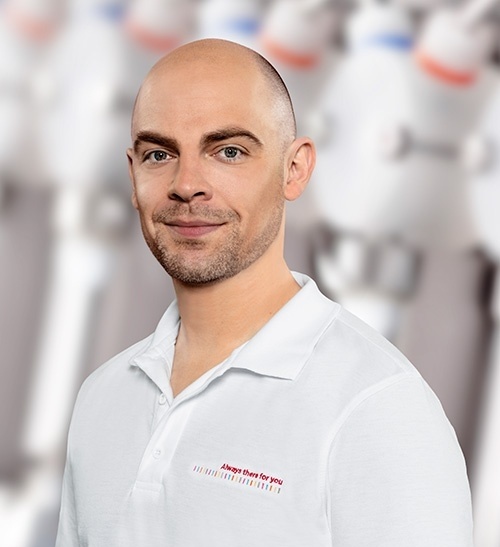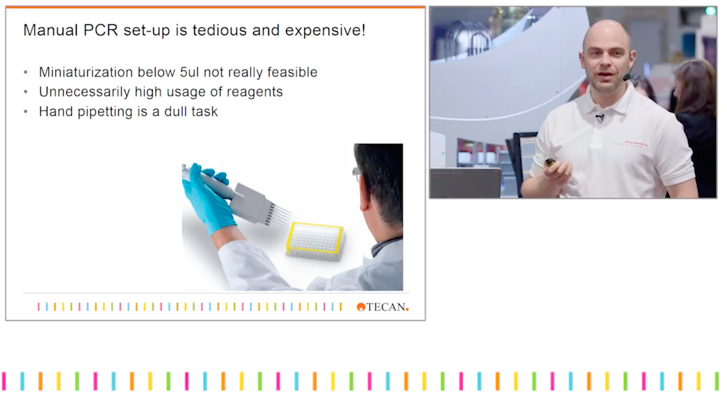By Dr Manuel Bauer
Why would you want to miniaturize your PCR experiments if they are working well as they are? Because manual PCR setup is tedious and hand pipetting is error-prone. Miniaturization allows for automation, minimizing the labor- and time-intensive aspects of PCR setup and the risks of manual error and cross-contamination. Miniaturization can also have a dramatic impact on the cost of doing PCR, reducing the amount of sample and costly reagents needed. In addition, by automating PCR setup, valuable technician time can be devoted to other tasks.
Manuel Bauer of Tecan explains the benefits of PCR miniaturization
Automation of PCR on the Tecan Freedom EVO® 100 provides users with key system benefits including Touch Tools, PCR Wizard, and the Freedom EVO's air displacement pipetting arm. Set-up is easy using the Run Time PCR Wizard function. It provides an excellent visual overview of each run, allowing you to see the layout of each plate in a run, whether 96- or 384-well format, and offering user-defined placement of controls and color coding to distinguish between Master Mix, samples, and controls. The air displacement pipetting arm on the Freedom EVO 100 (Air LiHa) provides rapid, high precision pipetting in a volume range of 0.5-1,000 µl per channel, with a free dispense capability down to 0.5 µl.
Can you reliably dispense even smaller volumes to perform automated PCR set-up? Yes, by using digital dispensing technology capable of delivering picoliter droplets. Hewlett Packard has developed its proprietary inkjet technology to produce the Tecan D300e digital dispenser. It dispenses picoliter droplets, thousands per second, enabling the delivery of virtually any amount to any well in a 12- to 1536-well SBS plate. The plates can be assay-ready or dry. Dispensing options are 13 pL minimum drop DMSO or 11 pL minimum drop aqueous buffers containing a surfactant.
We have shown that we can push reaction volumes even smaller – as low as 2 µL – with no loss in fidelity and cutting reagent use in half. Work is underway to allow the system to go into the sub-µL range for PCR. We conducted an experiment to compare PCR set-up using manual pipetting or the D300e digital dispenser in 96-well plates. The PCR Wizard simplified setup when using a variety of combinations of samples and primers. We showed that setup for a conventional PCR workflow required only one step with liquid handling on the automated D300e, whereas it was a two-step manual process. Not only was the setup faster with the D300e, but the reaction volumes could be reduced to 5µL, compared to 25 µL with manual processing. Overall, the switch from manual PCR setup to the D300e allowed the same experiments to be done in 2X less time, using 5X less reagents and primers, and 200X less sample (in this case DNA, which translated to 8X fewer animals needed). Digital dispensing and 5 µL reaction volumes led to a total cost savings of 29%.
*For Research Use Only. Not for Use in Clinical Diagnostic Procedures.
About the author

Dr Manuel Bauer
Dr. Manuel Bauer joined Tecan Switzerland in 2013 and is responsible as Senior Market & Product Manager for Tecan's automated MS sample preparation offering and the Tecan D300e digital dispenser. He studied Biology at the University of Würzburg and Free University of Berlin. During his PhD at the ETH Zürich he focused on systems biology, and has also applied various MS-based proteomics techniques during his post doc at the Biozentrum Basel.












